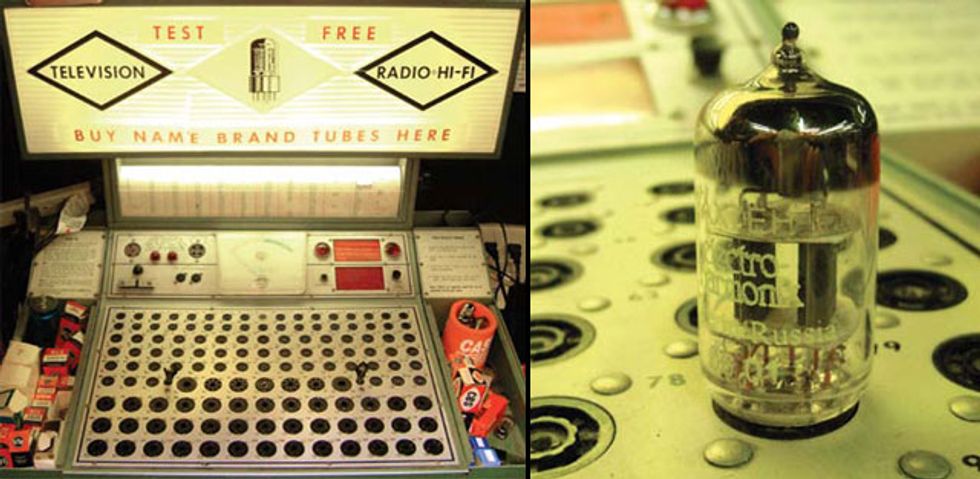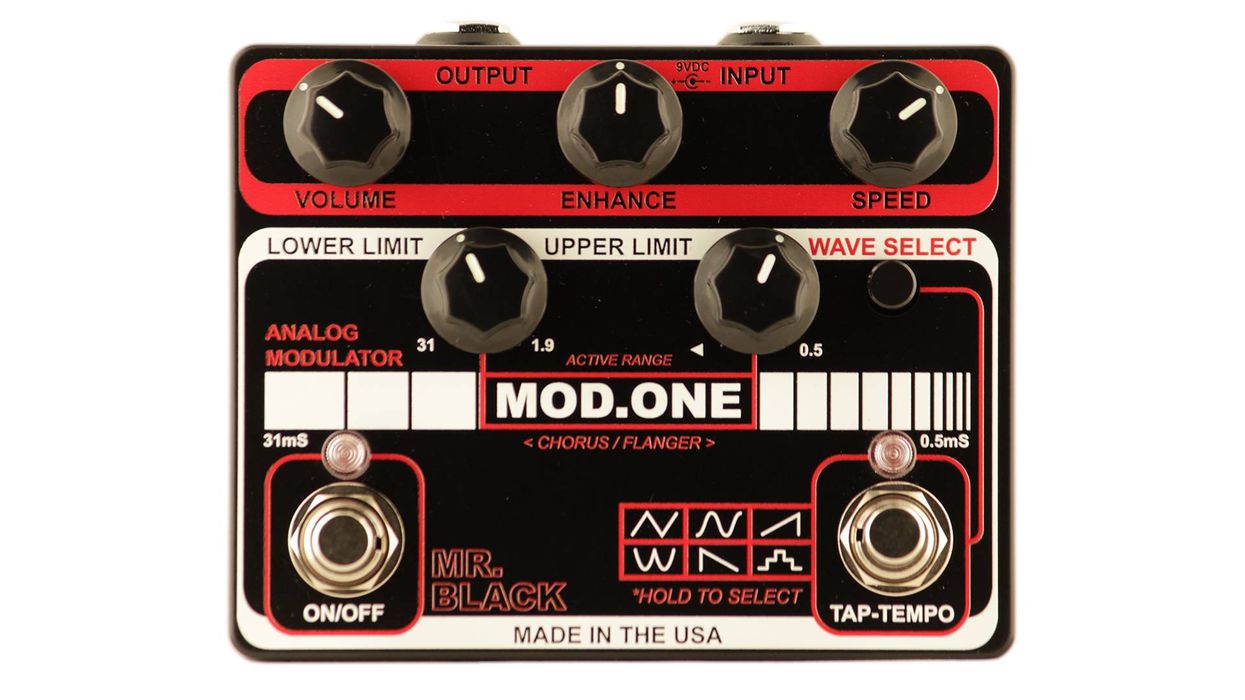 LEFT: Checking the condition of your tubes on a tube tester can help weed out weak tubes that could cause an
amplifier to break down on tour. RIGHT: A preamp tube undergoing a test that will determine its ultimate fate.
LEFT: Checking the condition of your tubes on a tube tester can help weed out weak tubes that could cause an
amplifier to break down on tour. RIGHT: A preamp tube undergoing a test that will determine its ultimate fate.Until a few years ago, my understanding of the technical aspects of tube amplifiers was very basic. But more recently, I’ve delved into the world of valve-driven amps and have learned a great deal about how different components affect tone. In order to control your sound, it helps to have an understanding of how tubes work. If you’re new to the world of power tubes and their respective sounds, lets begin with a crash course in two of the most popular power tubes—6L6s and EL34s.
6L6s and EL34s are of the octal-plug variety, meaning both are 8-pin tubes. Here’s where they differ: 6L6s are loosely described as delivering an “American” sound, primarily because they were the main tubes used in Fender amplifiers. Tonally, their sound is big, fat, warm, and round. They have a nice balance of lows, mids, and highs, with a little bit of a mid scoop and added thickness on the bass side. A 6L6 is great for providing clarity, detail, sparkle, and presence to your sound. In many cases, the 6L6 is the preferred tube for clean tones or bluesy, overdriven colors.
EL34s are often described as having more of a “British” tone. They are tight and punchy in the low mids, tend to have a touch of a mid scoop, and are a bit brighter than 6L6s. The EL34s distort more quickly than 6L6s and tend to clip in the upper-mid range and treble range. EL34s are great for achieving semi-dirty tones for rhythm playing. The sound of vintage Marshalls comes from driving EL34s hard.
Both 6L6s and EL34s can usually be installed in the same socket. So, if you currently have 6L6s in your amp and are looking for a more British sound, you can most likely replace them with EL34s. But wait, there’s a catch—and its called biasing.
Every tube type requires a basic range of voltage and current for the manufacturer’s optimum, recommended operation. Before you go plugging any old octal tube into your amp, you need to understand the specs of the tubes and see if your amp can accommodate the requirements. Every tube varies in its current draw when it comes off of the manufacturer’s finish line, and this is the reason amps and tube devices have to be properly biased. While most amps have an adjustable bias, there are amps where the bias is fixed.
I mainly play Mesa/Boogie amps, which are fixed-bias amplifiers. The benefit of a fixed-bias amp, loaded with properly rated and tested tubes, is that the tubes can be swapped out without having to take your amp to a tech for biasing. The bias will not drift in a fixed-bias amp. The advantage of adjustable-bias amps is that an individual has the option to alter the amp’s tone by running the amp hotter or colder than the manufacturer’s recommended specification for a given tube. The hotter you run an amp, the quicker the tube will reach its clipping threshold, which will result in a more overdriven sound. Personally, I like gear that is easy to tech on the road, so I stick with fixed-bias amplifiers for hassle-free tube changing on tour.
So how can you tell when a tube is starting to go bad and needs to be changed? Well, the most obvious clue is when you hear a change in tone. The most extreme ends of the frequency spectrum tend to be the most obvious tip-offs. Generally, you’ll notice a loss in the amp’s high end—a reduction of clarity and brilliance. You may also experience a mushy or “flubby” response in the low end. Tubes, like guitar strings, wear out over time and will begin to sound dull.
It’s best to use your ears when evaluating tube life because visual diagnostics can be misleading. Just because a tube is glowing does not mean it is working properly. Of course a tube that is not lit has certainly reached the end of its life. And while we’re on the topic of failing tubes, a faulty preamp tube will never cause your fuse to blow. If your fuse is blown and the issue is tube related, the problem will lie in your power tubes or a rectifier tube. Before you go on the road, it’s a good idea to test all of your tubes with a tube tester, including your spares.
If you’re interested in gaining a deeper understanding of tubes, fuses, biasing, and how they all work together, one good resource is Mesa/Boogie’s Amplitudes newsletter, which is available on their website. Tube-amp fanatics also praise Understanding Tube Amps, a DVD by Gerald Weber of Kendrick amps, and Groove Tube founder Aspen Pittman’s The Tube Amp Book—Deluxe Revised Edition.
The more you learn about how your gear works, the better equipped you’ll be to perform repairs and make tonal changes. You’ll be that much closer to capturing that ever-elusive “perfect tone.”






![Rig Rundown: Russian Circles’ Mike Sullivan [2025]](https://www.premierguitar.com/media-library/youtube.jpg?id=62303631&width=1245&height=700&quality=70&coordinates=0%2C0%2C0%2C0)


























